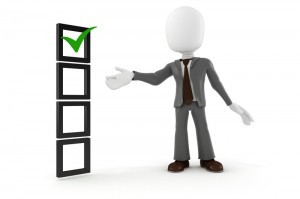This is Part 2 of a two-part series. In Part 1, the chairman of an AmLaw 100 firm learns the purpose and key benefit of after-action reviews – identifying and turning into actionable items the lessons learned in the matter. In this part, he learns other benefits the reviews can bring, as well as when and how they should be conducted.
What is the purpose of after-action reviews in a law firm? (cont'd)
In Part 1, Keith Mayfield, chairman of an AmLaw 100 firm, learned that the key benefit of an after-action review is to identify lessons learned in the matter, and turn them into actionable items that the firm can apply to future matters.
What other “soft” information should we also capture during the review for use by our colleagues?
The after-action review meeting also presents a unique opportunity to collect other valuable information that otherwise may be unavailable. These include:

Key substantive issues addressed. If the review team develops a brief list of the key issues addressed during the matter – such as substantive legal issues, structuring issues, strategic or tactical issues or client relations issues – the list can be made available in a searchable database. Lawyers seeking to consult regarding those issues on another matter can then readily identify the relevant historical matters and the proper colleagues to consult, which will be more efficient than an All-Lawyers e‑mail or phoning around to the “usual suspects.”
Main factors affecting the fee. The review team can relatively easily create a list of the main tasks that drove the fee for various phases of the matter – for example, the number of depositions taken or expert witnesses prepared, or the number of areas where specialized due diligence was required, such as environmental or intellectual property. Whether or not the firm has a mature legal project management or fee benchmarking function, this information will be extremely helpful for lawyers seeking to estimate fees or analyze the reasonableness of fixed fee proposals.
Verify matter parameters and description. The after-action review meeting can also serve as a forum quickly to confirm basic data already collected about the matter as part of the firm's matter experience system, such as size of deal, industry, parties and type of transaction; or amount in dispute, industry, parties and type of proceeding. The data from this system can be used to identify comparable matters for purposes of finding precedents, making pitches and staffing new matters. The review group can also confirm the narrative description of the matter for press releases and pitch materials. This basic data should be collected in advance of the after-action review meeting, and circulated to the review team prior to the meeting.
What are some other benefits of after-action review meetings?
After-action review meetings also serve a training and morale-building purpose for associates. This meeting may be the only time during the matter where some associates get a sense of the scope of the entire matter and how the part on which they worked contributed to the whole.
Also, merely participating in an after-action review meeting and being treated as an equal team member will contribute to more positive morale among associates.
When and how do we do an after-action review?
When?
For shorter matters, such as those that are completed in fewer than 6 months, a formal after-action review meeting covering the matters described above should be undertaken within a few weeks after completion of the matter. For longer matters, such as multi-year litigation matters, a formal after-action review should occur soon after completion of each key phase (discovery, trial, etc.).
How?

In person. The review meeting should be conducted face-to-face for participants who are based in the same location, and via video conference for those based in multiple locations. As many as possible of the entire team, from partner in charge to paralegal, should attend. Certain team members, such as the partner who managed the matter and the most active senior associate, will be essential participants.
Checklist-driven. The review should be guided by a checklist prepared in advance and customized for the matter. The checklist may be prepared from a standard form, with advance review by the partner in charge of the matter. The other “soft” matter information for which confirmation will be sought should also be compiled in advance.
Run by a neutral partner. If at all possible, the meeting should be run by a neutral partner who did not work on the matter. That partner will be able to be more objective, ask more probing questions and maintain the tone of the meeting as inquisitive about what happened and not inquisition-like about who was responsible for what happened. Contributions should be solicited from everyone in attendance. All contributions should be treated with respect.
Keep minutes and identify action items. Minutes should be kept of the after-action review meeting. They should be made available in a central database accessible to the entire firm (or practice group). They should be drafted with sensitivity to that wide availability. Key action items – we should always do X or refrain from doing Y – should be highlighted, shared with all participants at the firm's periodic after-action review discussion meetings and presented to management for incorporation into the firm's or practice group's general approach to conducting matters.
What are the biggest challenges to getting after-action reviews started?
After-action reviews should be piloted in a single practice group. Partners can be better persuaded to adopt the new procedures if they perceive an immediate benefit to their own practice, not merely an improvement for the greater good. Partner-specific benefits will vary from partner to partner and firm to firm, and will need to be identified on a case-by-case basis. Examples include improved partner reputation among associates (making for easier staffing), higher profile within the firm of the partner's matters (also making for easier staffing, as well as possible career enhancement) and compensation bonus for high participation (if management so decides and which could be set at a symbolic level).
In order to take hold, after-action reviews need to become part of the firm's culture. Changing culture is hard work and takes time. Senior management will need to push. The initiative should be piloted with receptive partners. Success stories from the early efforts should be publicized. The initiative can be gradually expanded. Client pressures may also help the initiative take root. Eventually the associates who were trained this way will become partners and the practice will be a part of the culture. Benefits will accrue well before then, of course.
Personality studies have shown that lawyers differ in a number of areas from the general business population. One of those areas is resilience – the ability to bounce back from failure and criticism. Sales professionals are high in resilience. Lawyers are low. One consequence of that trait is lawyers' resistance to change. Another is their sensitivity to criticism. The partner conducting the after-action review must emphasize that the purpose of the review is to discuss what happened in an objective and frank manner so the firm can improve, not to place blame. The partner must make a special effort to guide the discussion away from finger-pointing, and ask participants not to take what's discussed as personal criticism. The partner should also clarify that even though notes are being taken, the information is not intended for personnel files or as input to the professional review system.
Conclusion
After hearing the consultant's description of after-market reviews and their benefits, Keith, the AmLaw 100 firm chairman, decides he should start a pilot. He calls the lateral partner who had suggested the firm begin these reviews to ask whether he would be willing to be one of the pilot participants. Having hoped for the call, the lateral partner readily agrees.
Keith also calls the general counsel at the client who had inquired about the firm's practices regarding after-action reviews. Keith invites the general counsel to lunch to get the general counsel's perspective on how those reviews should be conducted. Keith also hopes that by committing to start a program for after-action reviews, his firm will remain under consideration for work from the general counsel. Keith hopes the client will condition the new work on an agreement by the firm to conduct after-matter reviews on that client's work, with summaries relayed to the client. This client pressure, Keith knows, can have a greater effect on his partners than hours of his own efforts at persuasion.
[Photo credits: © Can Stock Photo Inc. / digitalgenetics &PhillipMinnis]





Comments
There are no comments for this post. Be the first and Add your Comment below.
Leave a Comment